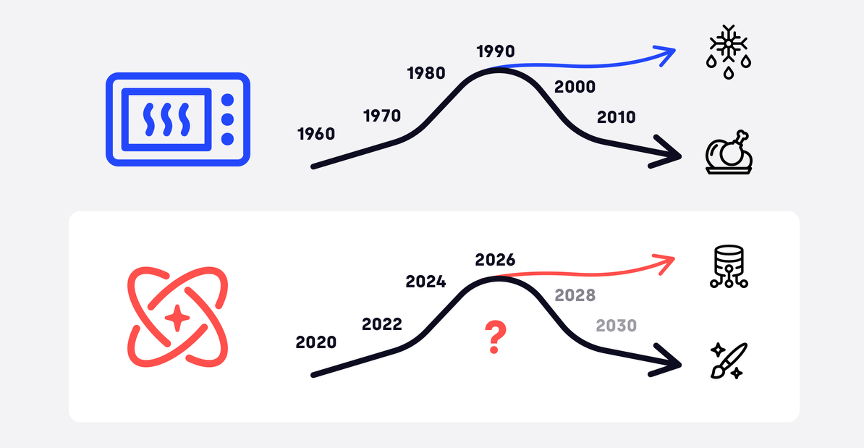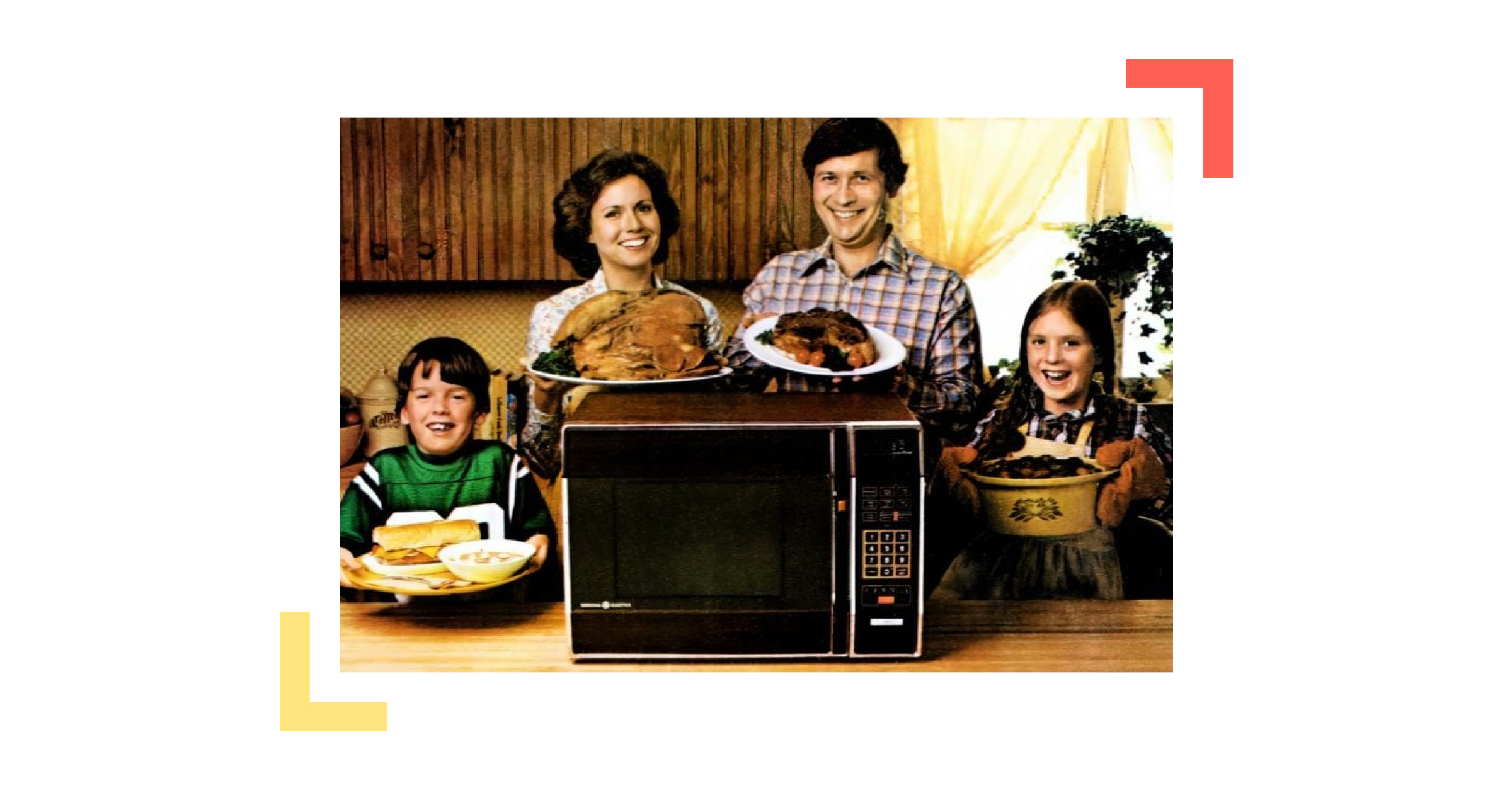
Imagine cooking your entire dinner using only your microwave. Steamed vegetables, pasta, meat… everything ready in just a few minutes. Then comes the mug cake, followed by popcorn. The timer rarely goes beyond three minutes.
No, thank you…
Yet, back in the 80s and 90s, it was all the rage!
Put everything in the microwave!
The very first microwave oven—originally called the “Radarange” and later commercialized by Amana—was invented in the United States by Percy Spencer at Raytheon during World War II. At first, fears about X-rays and unease toward this strange new technology lingered until the late 1970s.
Then suddenly, nine out of ten households owned one, and the whole family used it daily. Less energy-hungry and far more convenient than a traditional stove, it was a true revolution. Across Quebec—and around the world—people were saying, “It saves so much time!”
Some forward-thinking culinary pioneers even trained themselves to master this electromagnetic-wave machine—like Jehane Benoît, who successfully conquered both the French and Quebec markets. Opportunities were multiplying!

Then, gradually, trends evolved, and today we find ourselves with far more varied ways to cook simply and quickly. Let’s thank the air fryer for that!
Now, this appliance that once revolutionized water molecules still sits in our kitchens—but mostly as a meal reheater. Many kitchen designers even choose to hide it behind a cabinet panel.
More concretely: generative artificial intelligence.
I can’t help but feel that we’re living through a similar era when it comes to the democratization of generative AI, which is experiencing exponential growth in text writing and image creation.

Think, for example, of the latest trends like “Ghibli-fied” images or “starter packs” (by the time this article is written, those trends are already fading).
Perhaps we’re already nearing the peak of this phase—when companies are multiplying AI-generated ads, taking advantage of the fact that the public is still largely unaware of issues like copyright or energy consumption.
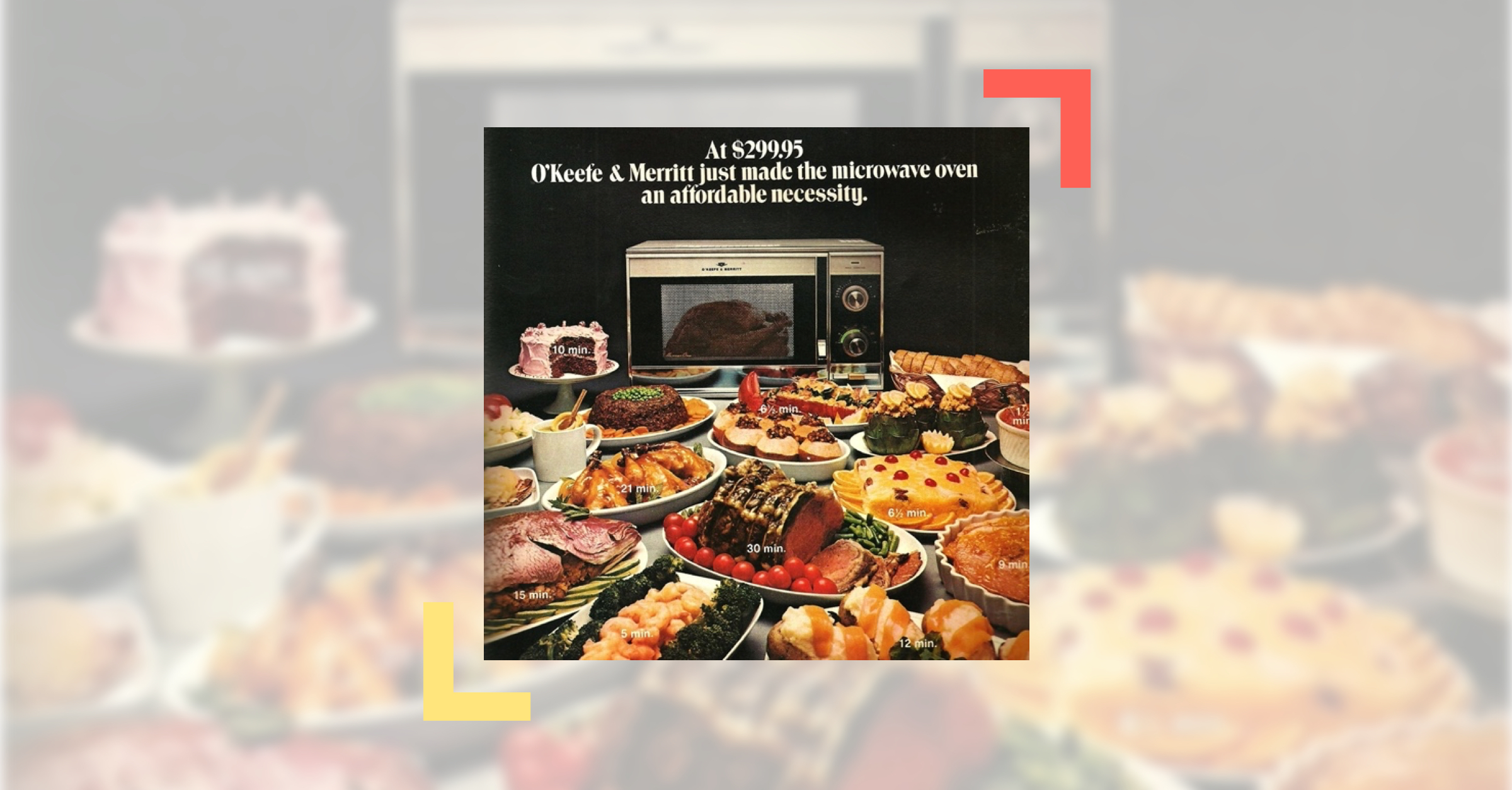
We’ve reached a turning point — soon we’ll see whether this trend fades on its own or if we’ll be forced to scale back our usage once the tech giants decide to hand us the bill.
In any case, what will likely endure is the use of AI as an assistant in our daily lives and in business intelligence — helping us become more productive and save resources. From there, it will be up to companies to take a stand and decide whether they want to reinvest in people.
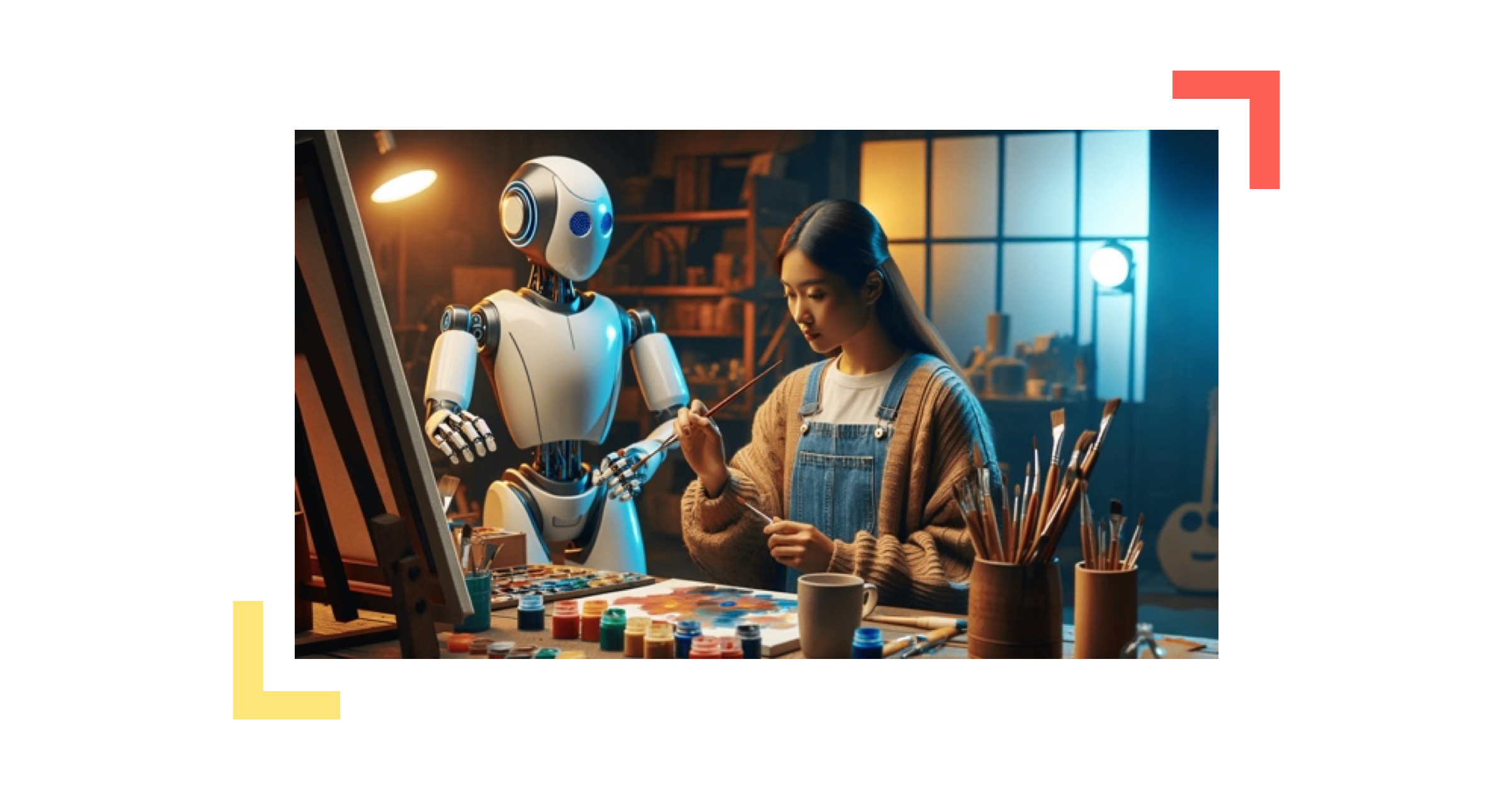
A return to slow cooking?
Following this microwave metaphor, I believe the “AI craze” in art and design will gradually fade, but the tool itself is here to stay. Many companies will continue generating their texts and images through ChatGPT (OpenAI) or Gemini, while others will return to a more human-centered approach—focusing on trust and credibility.
Collectively, the challenge will be to find the right balance in our use of generative AI—somewhere between “saving time” and “losing knowledge and empathetic customer service.”
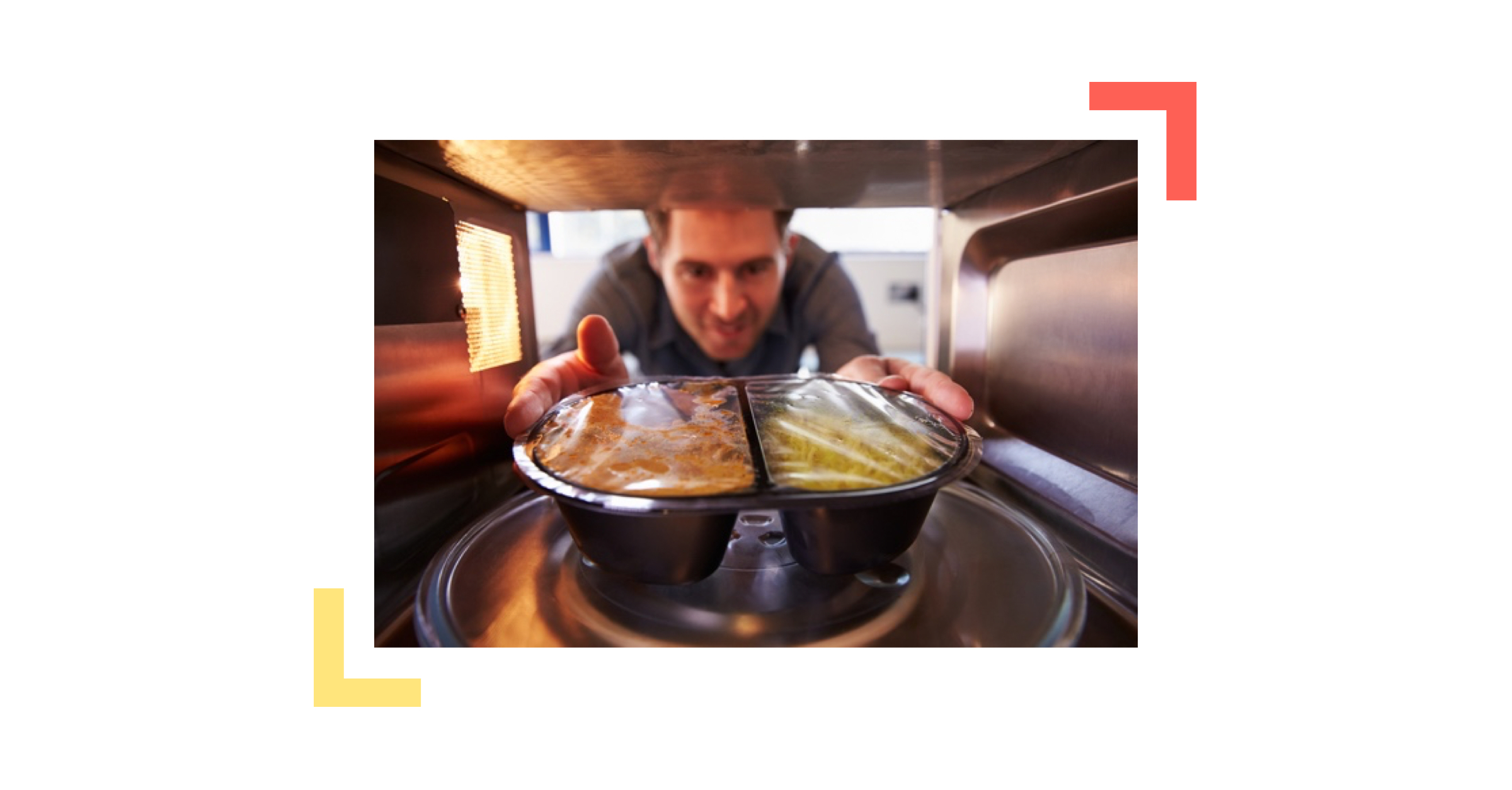
In short, it will be essential not to forget that human warmth must remain at the heart of what we create. Because, just like the microwave, creating with AI comes with the risk of serving something reheated — and cold on the inside.
Want to talk to the chef in the kitchen? Get in touch!
Sources :
- https://www.lapresse.ca/vivre/gourmand/201804/05/01-5159930-les-50-ans-du-micro-ondes-petites-ondes-grande-revolution.php
- https://www.journaldunet.com/intelligence-artificielle/1537803-ia-2025-3-mythes-a-deboulonner-et-3-tendances-a-anticiper/
- https://www.cnet.com/tech/services-and-software/ai-fatigue-is-wearing-me-down-the-hype-obscures-what-we-really-need-to-know/
- https://news.microsoft.com/source/emea/2025/01/les-6-tendances-incontournables-de-lia-en-2025-selon-microsoft/?lang=fr
- https://fr.wikipedia.org/wiki/Jehane_Beno%C3%AEt
- https://sloanreview.mit.edu/article/how-ai-is-improving-data-management/
- https://medium.com/@Wanjiru_Ngugi/usability-of-microwave-ovens-a-survey-2ff703bc94ea
- https://collimateur.uqam.ca/collimateur/impact-de-lia-generative-sur-la-pensee-critique/

